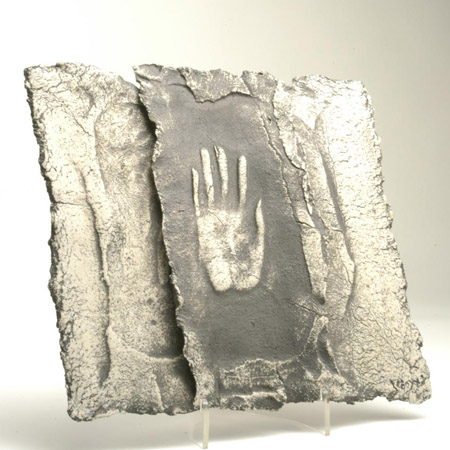Ulla VIOTTI
View in collection
Born in Eskilstuna, Sweden, she is an internationally renowned Swedish artist who has worked with a variety of clients and manufacturers developing brick sculptures. Her work consists of large sculptures and architectural ceramics employing a range of techniques. She has also created performance and installation works. She studied sculpture at Blackpool School of Art (1950-1951) and ceramics at Sweden's National School of Art Crafts and Design, Stockholm (1952-1956). On leaving art school she worked for ceramic factories for a short period. She was a member of Hemgarden (1957); a community settlement in Karlskoga, where she was in charge of art classes and started a pottery of her own, making functional, earthenware pottery (1960). During this time, a Royal Foundation Award allowed her to study Etruscan pottery in Italy. The visit influenced the formal aspect of her work and she also developed a figurative element. The turning point in her life came during a visit to Israel (1966-1967) where she first experienced the combination of sculpture and architectural ceramics at an international ceramics symposium and where she met ceramic artists who used materials in a more free way. She was greatly impressed by the ancient cultural and natural environment of Israel.
She returned to work in a stoneware factory in Jaffa (1967). During that time her work changed dramatically and she was drawn to document the structures of the landscape in drawings that manifested the feeling of 'forsakenness', a theme that often recurs in her relief work. From 1968 she started making reliefs and gave up working on the potters wheel. The first commissioned work for a public building was for a bank, Katrineholm (1969). Since then she has been making mural ceramic pieces for architectural settings, both on a monumental and a smaller scale. She has attended many international symposia, especially in Eastern Europe.
Much of her energy was spent in publicising this area of ceramics in Sweden and she organised the first international ceramics symposium in Jonkoping (1975). She moved from Wadcoping to Oserlen in Scania (1976) where she has received commissions in public buildings, banks and offices. Her work is represented in museums and collections throughout the UK and Sweden, including the collection in Aberystwyth. She participated in the first International Ceramics Festival, Aberystwyth in 1987.
Details
- Dates: b. 1933

